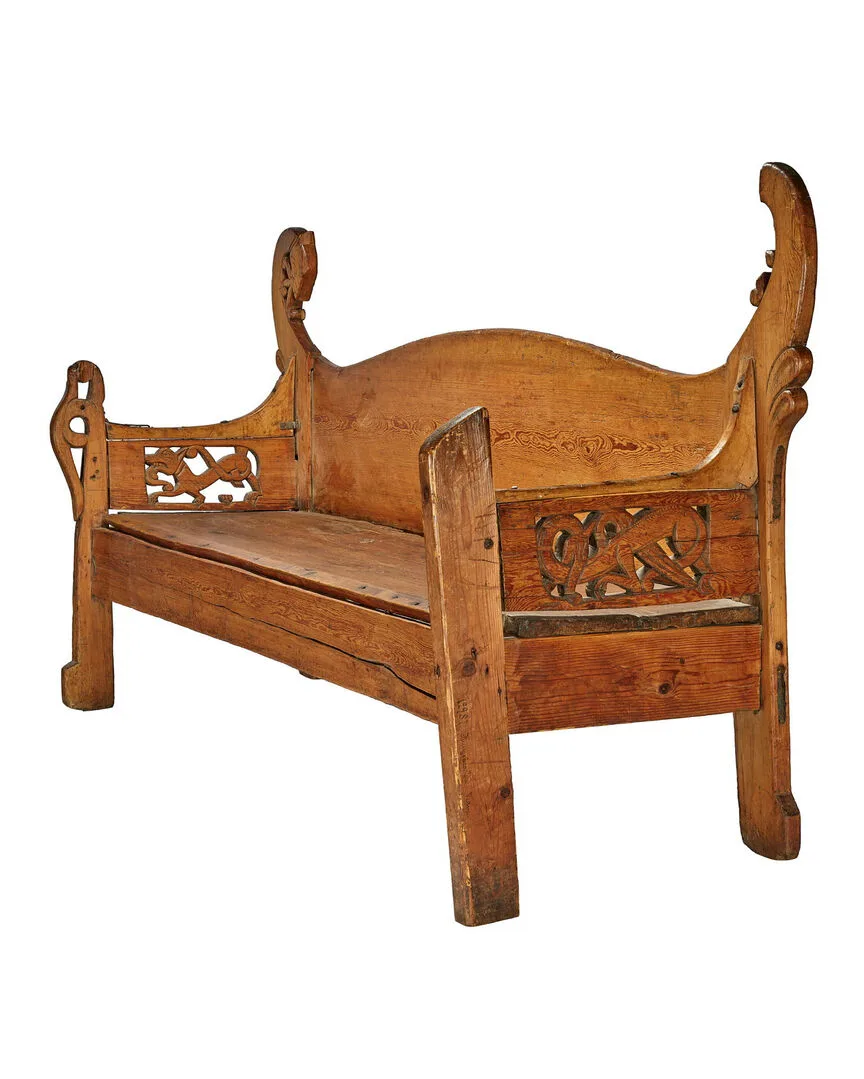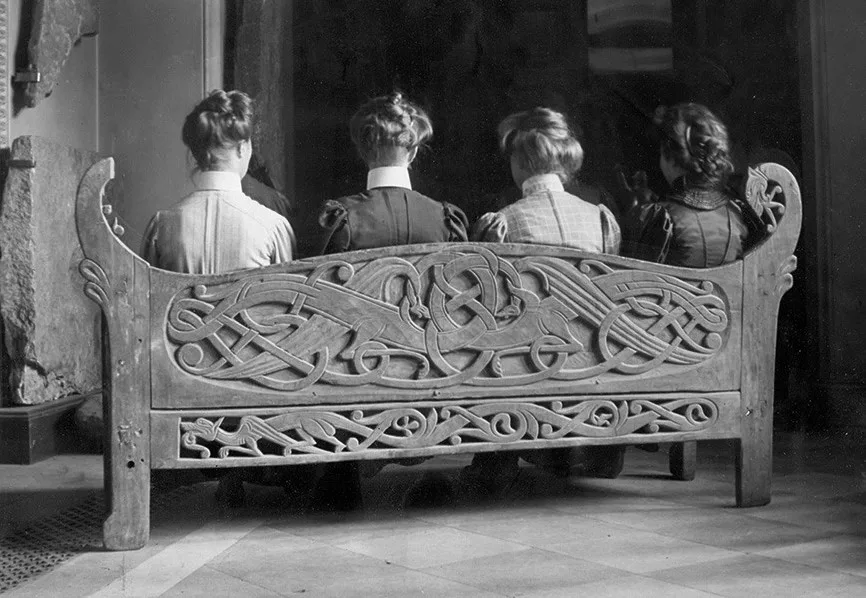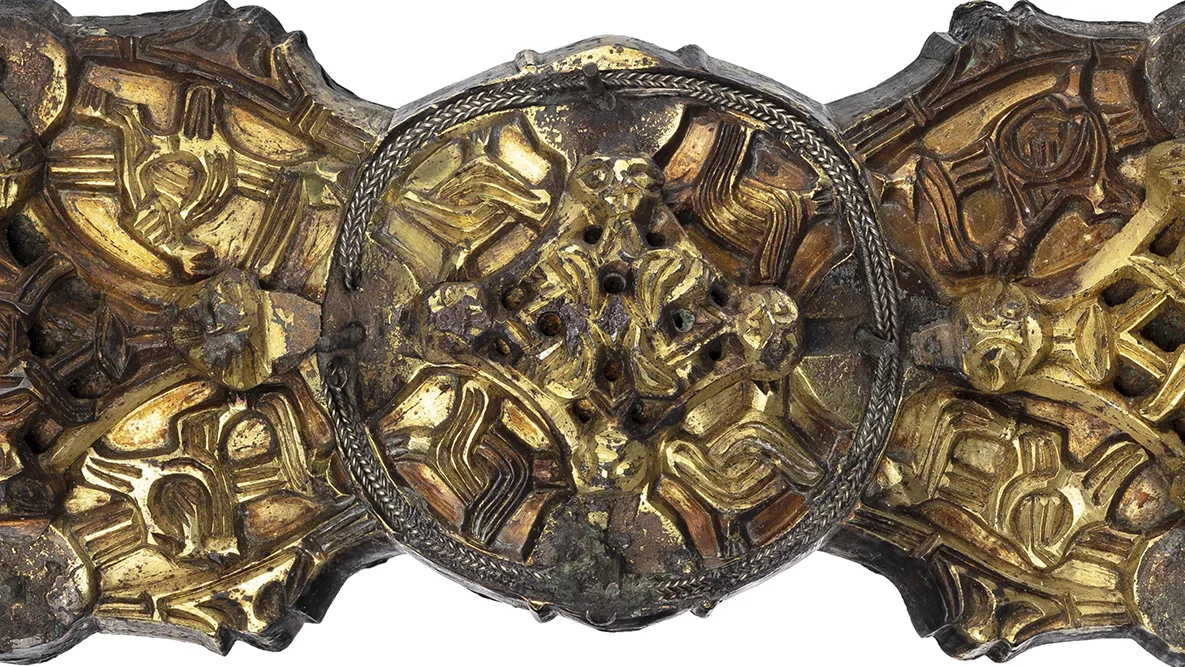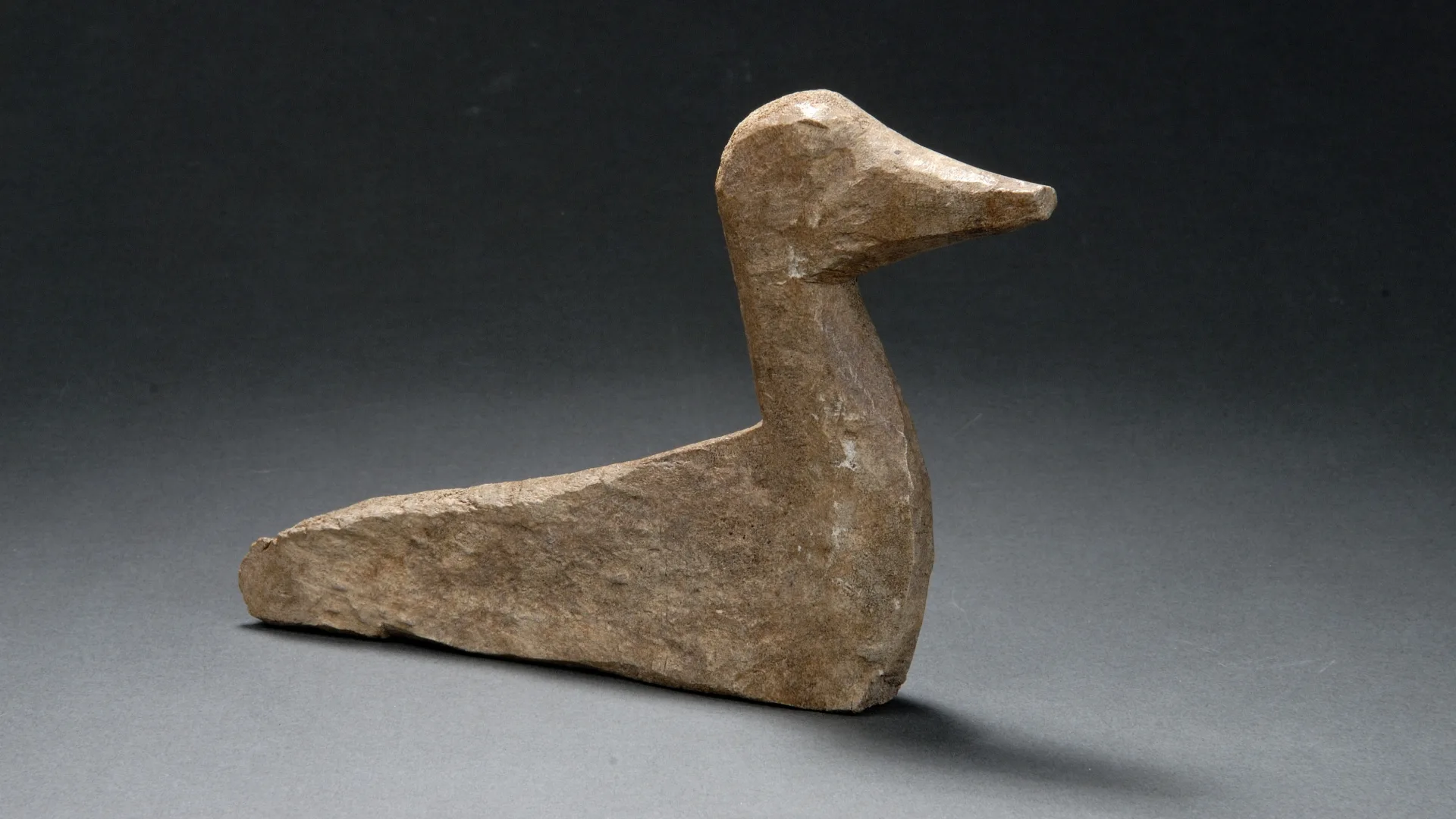Sweden’s oldest piece of furniture – the Kungsåra bench
Viking Age
AD 800 – AD 1100
Middle Ages
AD 1050 – AD 1520
Modern Age
AD 1520 – AD 2025
On the organ loft of Kungsåra Church stood an old bench, probably there since the 1700s. Originally, the bench likely stood freely in the church room, as the backrest features carved dragon patterns. The bench was therefore intended to be viewed from behind.The Swedish History Museum was offered the bench for purchase, and it immediately became a public attraction.

The Kungsåra bench
On view at Historiska museet in the exhibition Medeltida konst
Viking-Age patterns
The backrest of the bench is decorated with intertwining animal motifs in the form of winged dragons carved in low relief. Its posts, one of which is damaged, are adorned with dragon heads. The side panels are decorated with slender four-legged animals with hanging tongues. Below the backrest is a pierced plank, also with animal ornamentation.

Both the construction and ornamentation of the bench resemble objects from the Norwegian Gokstad and Oseberg grave finds, though those date to the 9th century, while the Kungsåra bench is significantly younger. The intertwining animal motifs on the bench were made in a style popular during the 11th and 12th centuries.
We do not know who commissioned or used the bench, but it was likely someone of high status. It is quite possible that the bench originally belonged to a pre-Christian context and only later ended up in Kungsåra Church.
The Kungsåra bench. 3D model by Erik Lernestål, the Swedish History Museum/SHM (CC BY 4.0).
Woodcraft
The bench is made of pine and measures 214 centimeters in width. The seat board is approximately 50 centimeters deep, and its height from the floor is 45 centimeters. The total height of the bench, including the backrest, is about 108 centimeters.
The different parts of the bench are joined with wooden pegs. The planks were hewn with an axe. Other tools likely used in its construction include a knife, drill, and plane. It is unclear whether the bench was originally painted; no traces of original paint remain. In later periods, however, the bench seems to have been overpainted with gray paint.
Three to four adults can sit on the bench at the same time. This is known from an old photograph showing Sigrid Leijonhufvud, Rosa Norström, Märta Leijonhufvud, and Fanny von Haartman seated on the bench. Today, sitting on the bench is not allowed, but in the early 1900s, the museum evidently had different rules.







